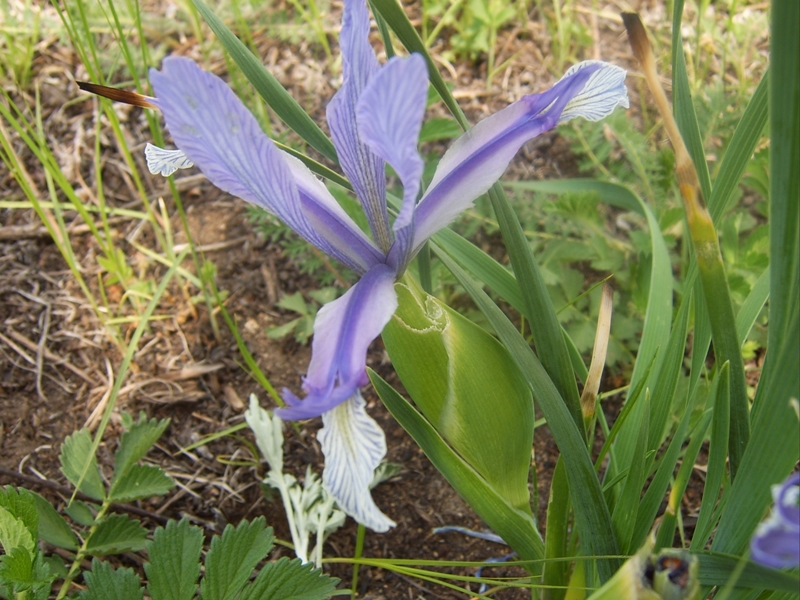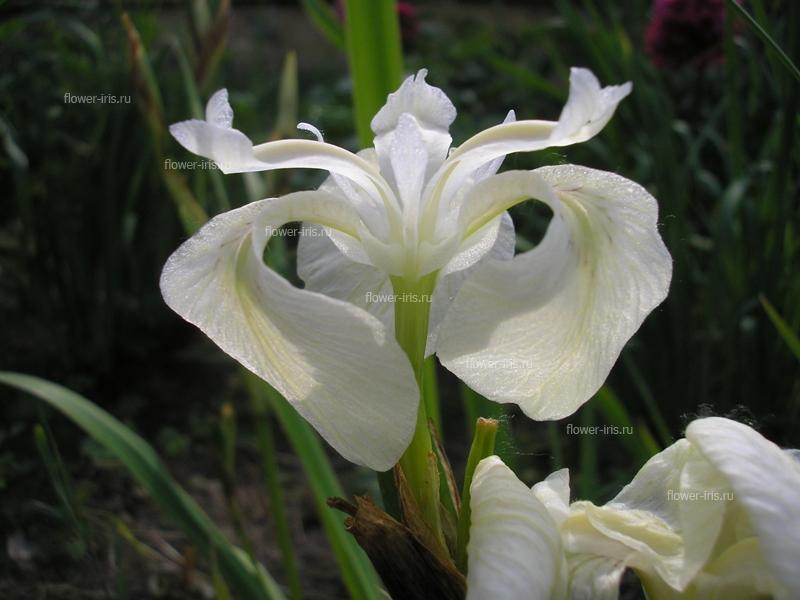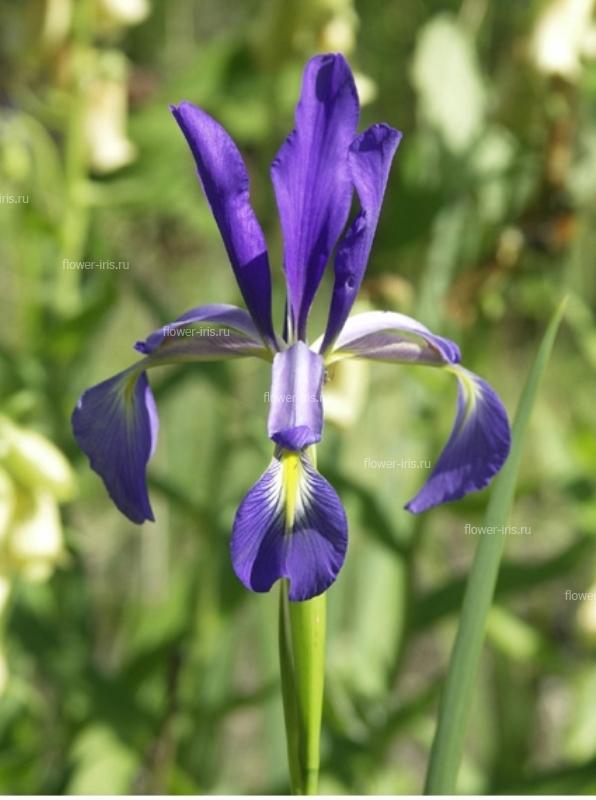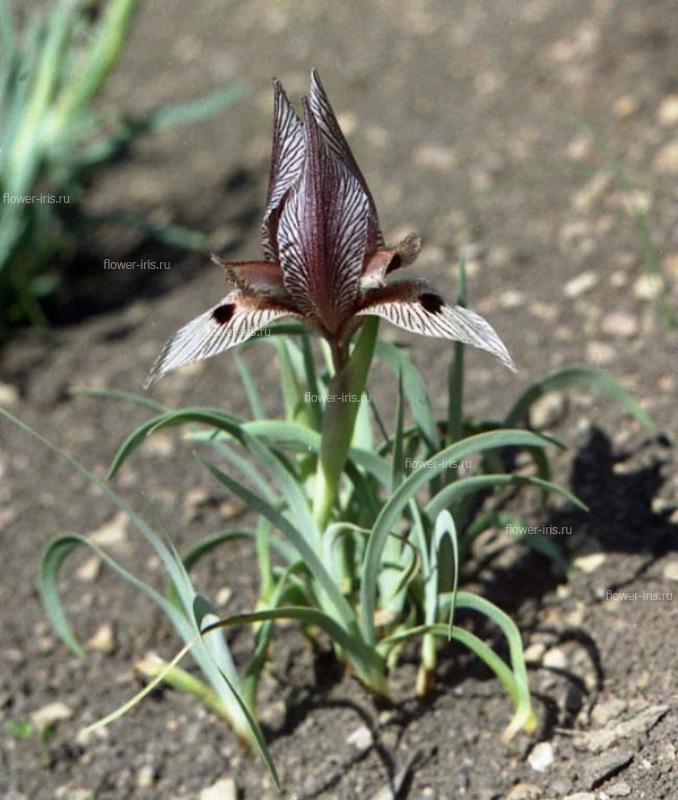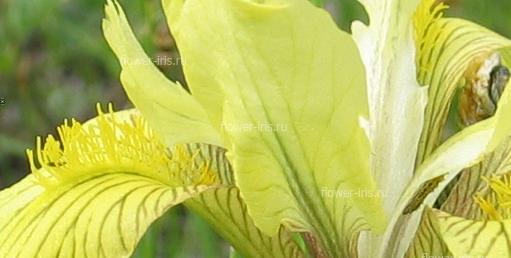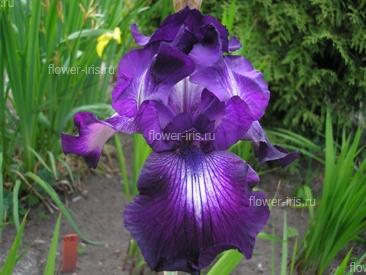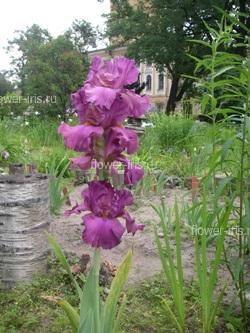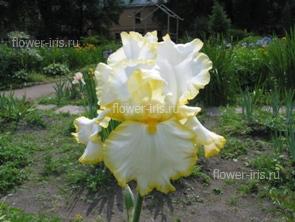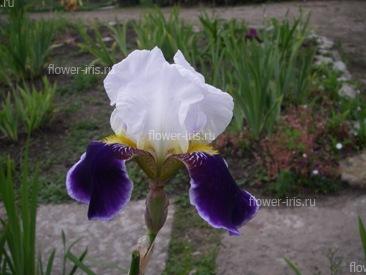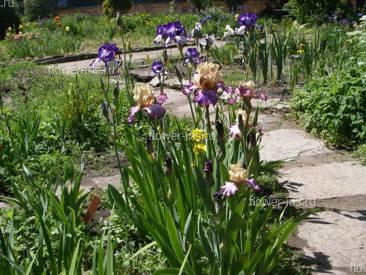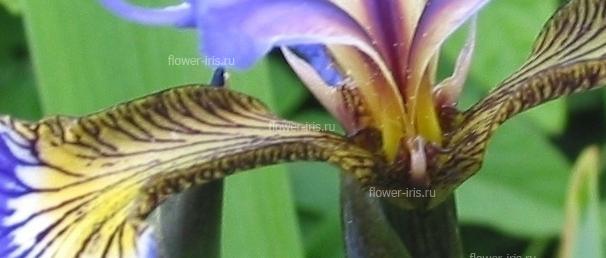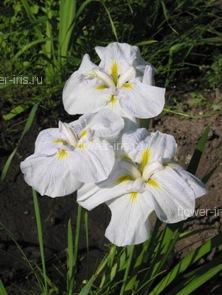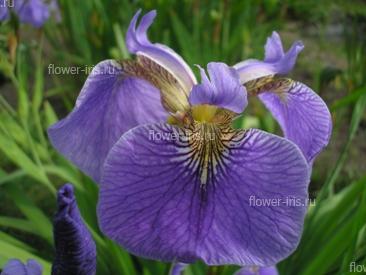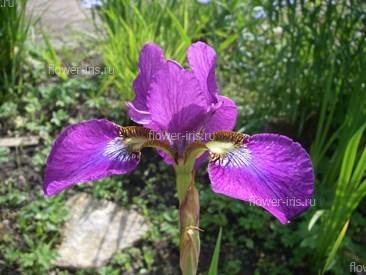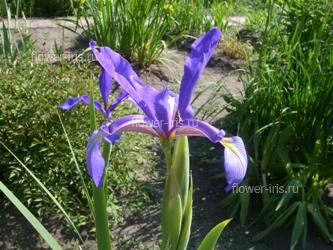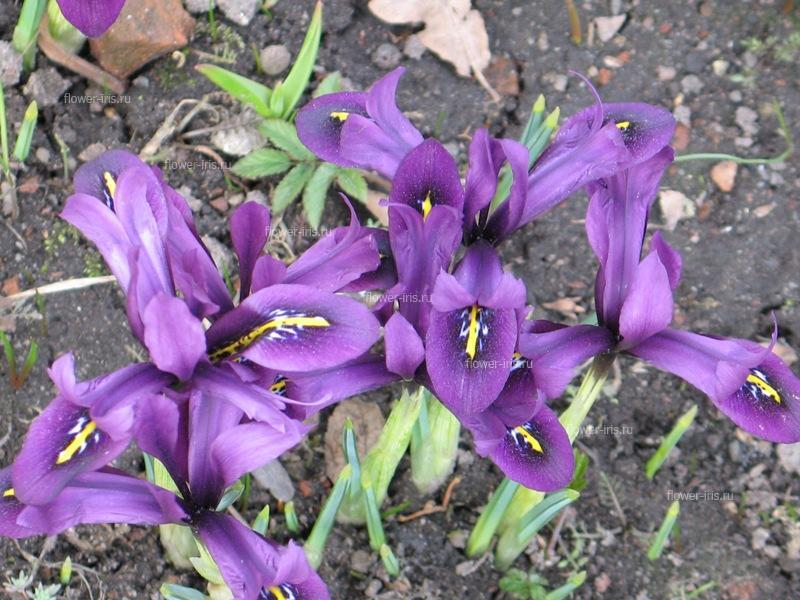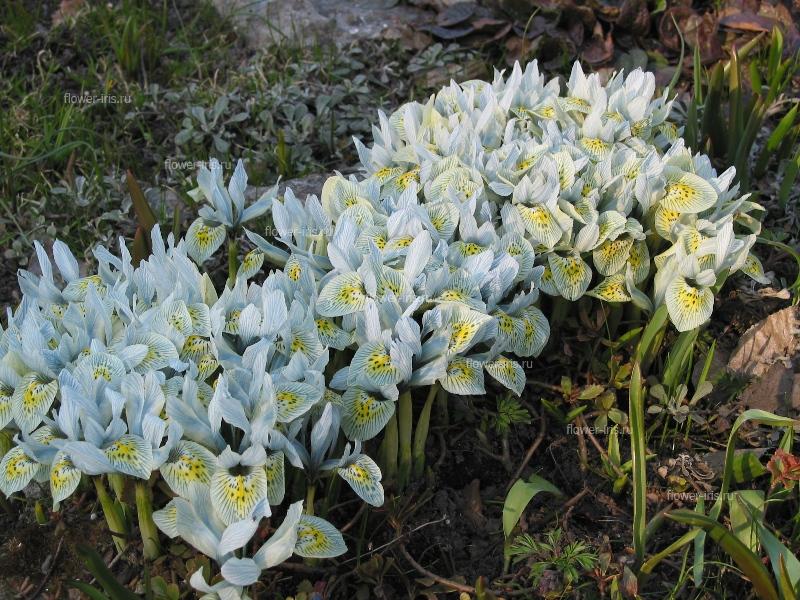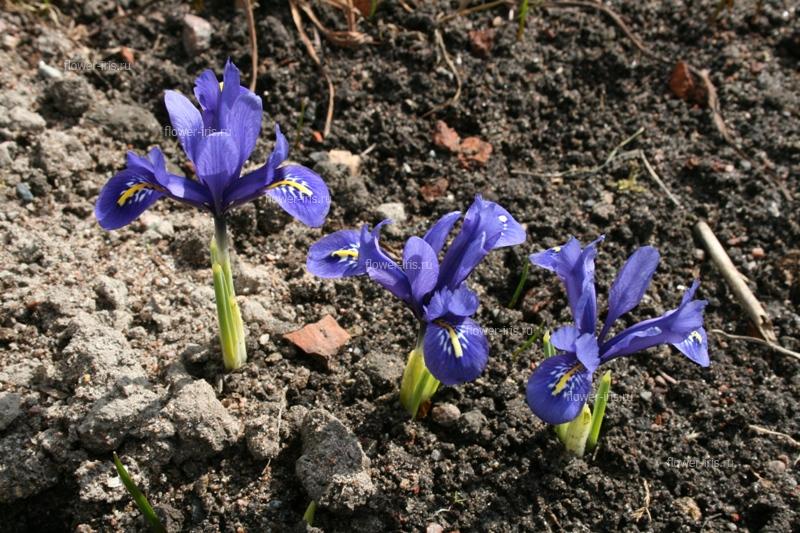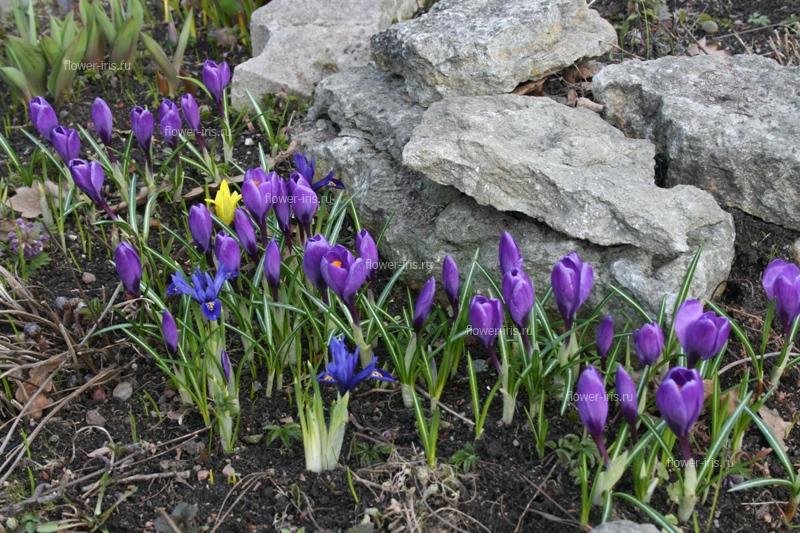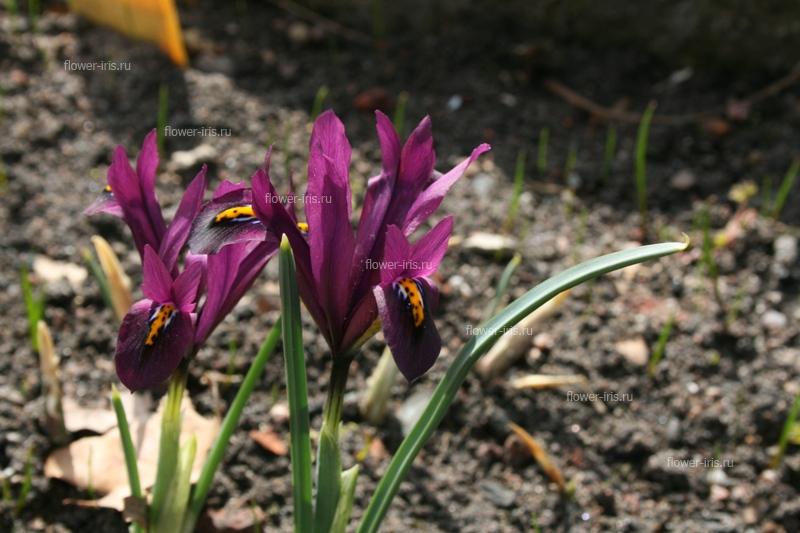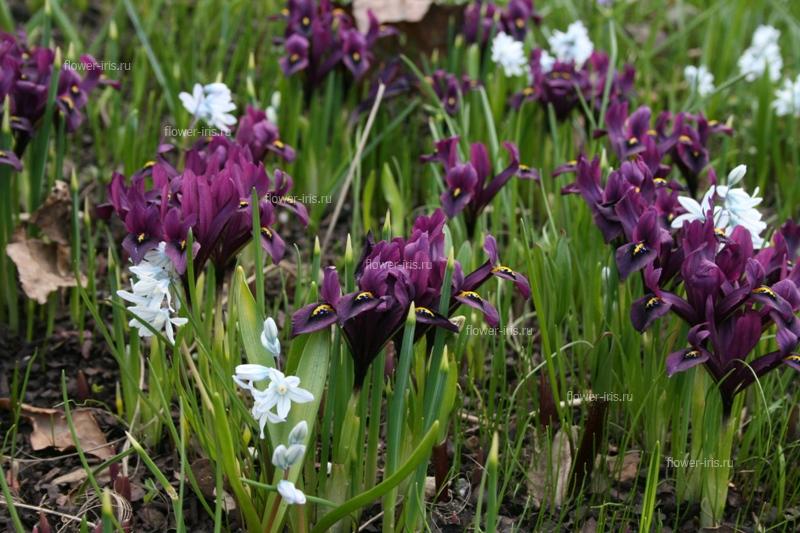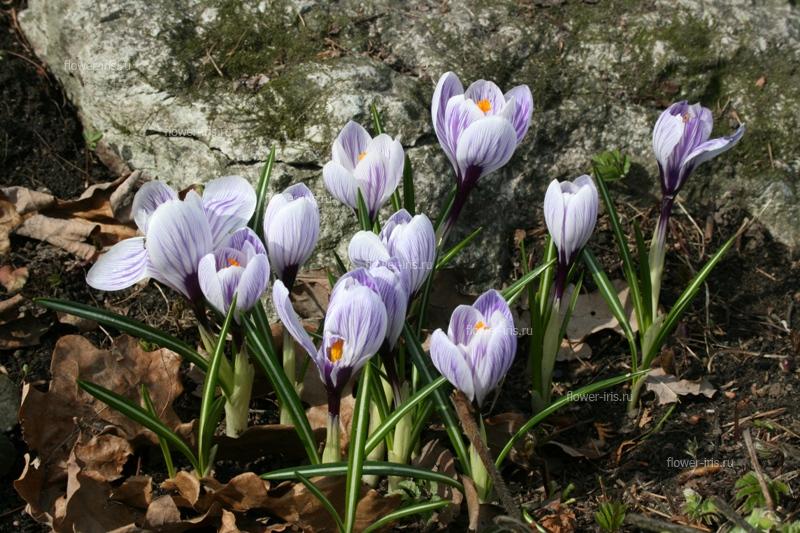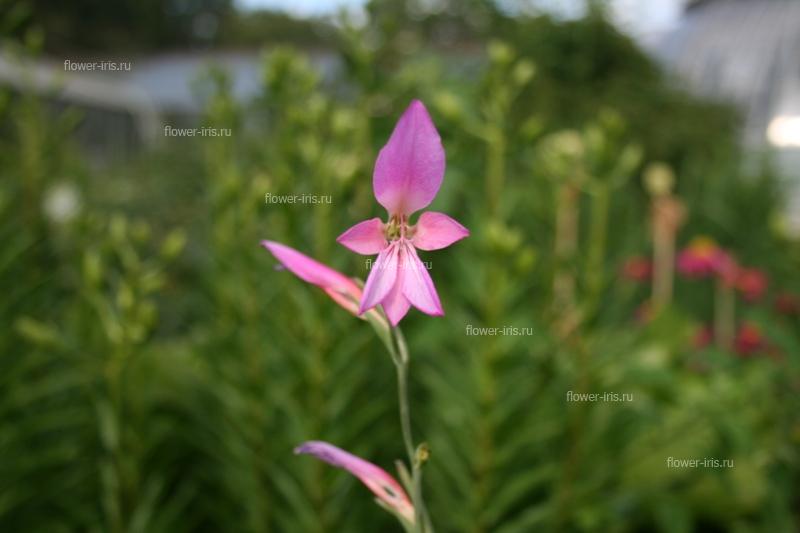|
News Photo Gallery |
Classification of IrisesHomepage → Classification of Irises Botanical classificationNowadays the genus Iris comprises about 200 species. It includes species which are perennials with annual floral shoots and shortened vegetative shoots forming rhizome dug in soil or creeping on surface, it has ensiform leaf blade. History of taxonomy of the genus Iris L.1753. К. Lenne divided 18 species of Iris he knew in two groups – Bearded (Barbatae) and Beardless (Imberbis) Irises. 1782. К. Thunberg, Lenne’s disciple published the first monograph concerning the genus Iris. He knew 43 species of the genus which he divided in Bearded and Beardless Irises following Lenne, he split these large groups in smaller ones according to leaf form (ensiform, linear and, tetrahedral leaves). 1823. I. Tausch, Check botanist included rhizome and bulbous species in the genus Iris but he used more features of taxonomy: nature of underground organs, leaf form, structure of perianth as well as form of stigma, features of bolls and seeds. Tausch split species of the genus into 6 section: Pogiris, Lophiris, Limniris, Xyridion, Spathula, Xiphion. Tausch system was acknowledged by the majority of botanists and was used until the end of the ХIХ century; most of his groups were preserved in successive classifications of the genus. 1846. E. Spach amounted the scope of the genus approximately to 89 species however the system review included only 56 species and 11 subspecies. Spach was the first to propose a three-step subordination of species. He divided the genus Iris in 15 subspecies. Subspecies Xiphium, Xyridion, Limniris, Pogoniris included paragraphs (in essence they are sections) which were subdivided in groups. 1892. Baker discussed more than 160 species which he distributed in 10 subgenera. He divided bulbous and rhizome species in two series. The series of rhizome species included the following subgenera: Apogon, Pardanthopsis, Oncocyclus, Regelia, Evansia, Pseudevansia, Pogoniris ((a sub-genus included 5 groups of relations - I. pumila, I. biflora, I. variegata, I. germanica, I. pallida); the series of bulbous species included the following subgenera: Xiphion, Gynandriris, Juno. 1913. W. Dykes studied irises on the basis of live collection of the genus species he created. Simultaneously he researched rich herbarium materials on the genus stored in British herbaria. Dykes understood the genus Iris at large scale including all bulbous species. Total amount of the genus species he knew comprised 138 species. He divided the genus in 12 sections and split separate sections in groups (to which he did not give Latin names). Later his work was depersonalized because he did not follow rules of nomenclature largely accepted those days. 1953. Lawrence, American botanist carried out labour-consuming work on reconstruction of priority names and clarified vague nomenclature. He managed to reflect complex structure of the genus Iris in four-step subordination of supra-genus taxons: sub-genus, section, sub-section, series. According to Lawrence the genus included 153 species. He understood the genus Iris at broadest, i.e. including bulbous and bulbotuber irises. 1961. G. I. Rodionenko following Lawrence used four-step subordination of supra-genus taxons but he excluded bulbous and bulbotuber species from the genus Iris. Thus, he sorted out the genus Iridodictyon Rodion. and reconstructed the genera: Xiphion, Gynandriris and Juno. G. I. Rodionenko related no more than 200 species to true irises (only species with rhizome and ensiform leaf blade). G. I. Rodionenko similar to Dykes could observe the live collection of species and forms of irises of various geographical origins in the Iridarium he and his assistants created in the territory of V.L.Komarov’s Botanical Institute. 1981. Brian Mathew published the system of the genus Iris based on principles proposed by Lawrence. He related 262 species to the genus including 72 species with bulbs and bulbotubers. His system is simple and convenient, it is a three-step system which includes 6 subgenera: Iris(in the subgenus Iris, Mathew sorted out 6 sections: Iris, Psammiris, Oncocyclus, Regelia, Hexagona, Pseudoregelia), Limniris(in the subgenus Limniris, Mathew sorted out 2 sections: Lophiris and Limniris, dividing the latter in 16 series) , Nepalensis, Xiphion, Scorpiris, Hermodactyloides. According to Mathew there are 190 species of genuine irises. There is no single opinion concerning composition of the genus even among its experts. As before some taxonomists include, the other exclude bulbous and bulbotuber species from the genus Iris, moreover, there is a trend to exclude some rhizome species from the genus Iris. Garden classificationGarden irises represent the most favourite exposition for visitors of the Botanical garden. In order to record achievements in the field of sort selection at the international level it was necessary to create garden classification which encompasses 17 different groups (Bearded Irises, Siberian Irises, Californian Irises, Spuria Irises, Bulbous Irises etc.). Total amount of ex situ sorts of irises amounts to more than 40000 items. There are societies of experts on irises in Great Britain, Russia, USA, Germany, Japan etc. which issue journals and annual editions devoted to various issues of biology, selection and culture of in situ and ex situ irises. Bearded Irises (there are multi-cell vibri on external parts of perianth)6 groups of garden Bearded Irises are bred in the Iridarium: Miniature Bearded Dwarfs, Standard Bearded Dwarfs, Intermedia, High Bearded Miniatures, Curb Bearded, Standard High Bearded. Beardless Irises (there are no multi-cell vibri on external parts of perianth)4 groups of Beardless Irises are grown in the Iridarium: Siberian Irises, Japanese Irises, Irises for Water Garden Spuria Irises. Bulbous and bulbotuber plants of the family IridaceaeAcidantera, Gladiolus, Crocus, Tigridia and “bulbous irises” Iridodictyum, Xiphium - are bred in the Iridarium. Bulbous and bulboruber plants extend periods of blossoming of the exposition. Small-bulbous irises Iridodictyum followed by Crocus start blossoming in early spring beginnning from mid-April. Xiphium “Dutch irises” blossom in mid-summer, Gladiolus – in late summer. Acidantera and Tigridia blossom in late autumn up to October-November. Bulbous Iridaceae. Iridodictyum, Xiphium, Juno require sunny location, loose fertile soil with good drain which should be wetted in vegetation period. Close to surface ground water level is not appropriate. Planted to the depth of 5-7 cm Iridodictyum can remain in one location for 3-5 year without losing its decorative features. It winters without cover. Addition of manure before planting together with 2 dosings - NK (1:2) when start growing and NPK (1:2:2) during blossoming (calculation: 20 g per sq m) has positive influence on bulbous plants. Dolomitic powder in the dose of 0.5-1 is considered to be an ideal fertilizer. |


 Eng
Eng

